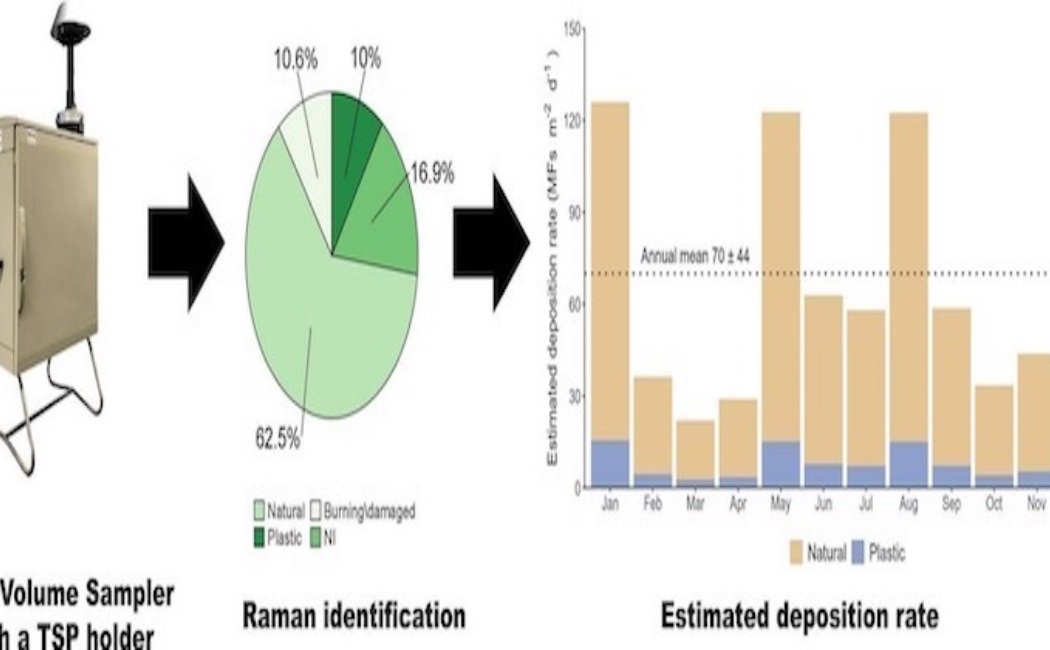
20 October, 2023
Atmospheric microfibrous deposition over the Eastern Red Sea coast
The transport of microplastics through the atmosphere has been acknowledged as a significant route for their dispersion across different environments. Microplastics of fibrous shape often prevail in environmental samples, although their composition identification might be challenging and lead to an overestimation of plastic microfibers (MFs). Conversely, MFs of natural origin are rarely reported in microplastics studies despite the lack of consensus on the risks they may pose to the environment. In this study, airborne MFs collected in a sparsely populated residential area on the shore of the Eastern Red Sea were analyzed to investigate their abundance and polymer composition and assess their potential transport and deposition rates. The length of observed fibers ranged from 183 μm to 11,877 μm, with 3 % of fibers being >5 mm. The average length of MFs (< 5 mm) was 1378 ± 934 μm. Plastic MFs comprised 10 % of all identified MFs, with polyester being the most common plastic polymer (81.25 %). The mean abundance of airborne MFs was 0.9 ± 0.8 × 10−2 MFs m−3. The estimated mean atmospheric microfibrous deposition was 70 MFs m−2 d−1, with a component of 8 plastic MFs m−2 d−1. Based on the HYSPLIT backward trajectory analysis, fibers of local origin (estimated to travel approximately 25 km before sampling) were deposited at the sampling location. Air masses of northwestern origin traveling along the coast of the Eastern Red Sea dominated, potentially reducing the abundance of airborne MFs.
Link: https://doi.org/10.1016/j.scitotenv.2023.167902